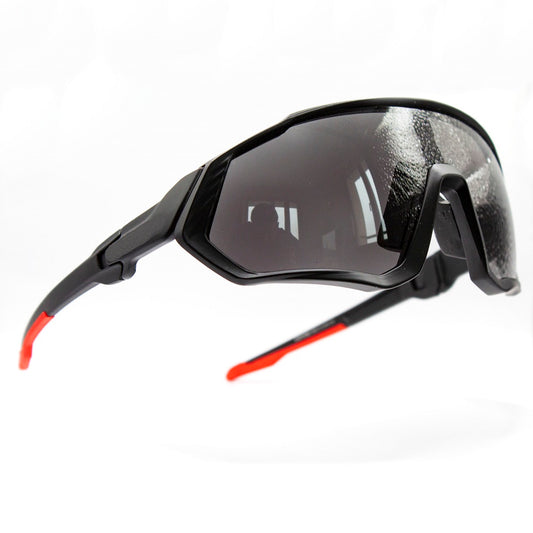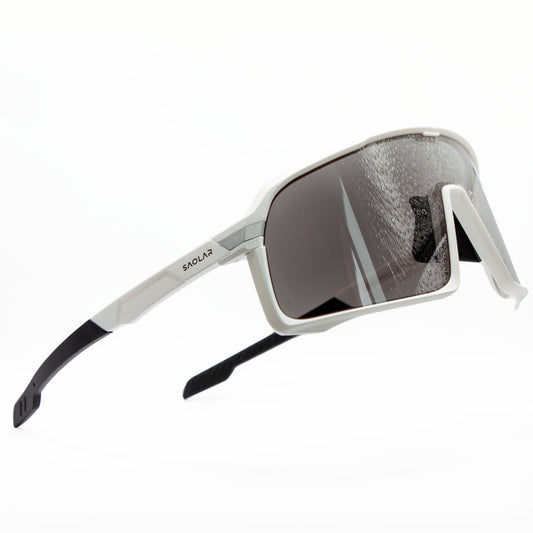Introduction to Electric Mountain Biking
Exploring trails with an electric mountain bike (e-MTB) combines the exhilaration of mountain biking with the power of modern technology, making it accessible for both beginners and seasoned riders. Electric mountain bikes open up challenging terrains and longer trails, helping riders experience the great outdoors without worrying as much about fatigue or steep inclines. The electric assist gives a welcome boost on difficult sections, allowing riders to enjoy the scenery and focus on their techniques, whether tackling rocky paths or winding trails.
Electric mountain bikes are also excellent for fitness, enhancing strength and stamina while reducing strain on joints compared to traditional bikes. With an e-MTB, even rugged trails are more accessible, helping you improve your mountain biking skills at your own pace. Additionally, cycling has proven mental health benefits, making it a great choice for stress relief. For a deeper dive into how biking can improve your mental well-being, check out our article on "What Are the Mental Health Benefits of Commuting by Bike."
The Joy of Assisted Riding
One of the greatest benefits of an e-MTB is the electric assist, which allows riders to experience the joy of mountain biking while taking on challenges with less strain. This assist feature opens up the sport to people of varying fitness levels, enabling families, beginners, and even experienced bikers recovering from injuries to participate.
A Gateway to Adventure and Fitness
Electric mountain biking isn’t just about the thrill; it’s also an empowering fitness tool that promotes endurance and offers cardiovascular benefits. By adding a bit of electric power, you can achieve longer rides, explore more trails, and boost your physical health. Riding an electric mountain bike could be the perfect introduction to an active, adventure-filled lifestyle.
Using Electric Assist Effectively
Mastering the electric assist on your e-MTB is essential for maximizing your ride. Electric mountain bikes typically come with various power modes, each designed for different terrains and energy usage. Understanding when to use these modes can significantly extend your battery life and improve your ride experience.
Choosing the Right Power Mode: Eco vs. Turbo
Many e-MTBs have at least three main modes: Eco, Trail, and Turbo. Eco mode provides minimal assistance, allowing you to conserve battery power, making it ideal for smooth or flat trails. In contrast, Turbo mode offers maximum power, which can be useful for steep climbs or when tackling challenging obstacles. By strategically switching between these modes, you can better manage battery life, especially on longer rides. Riders interested in learning more about how optimized gear can improve their rides can explore our guide on "Top Features to Look for in High-Quality Sport Sunglasses" for performance insights.
Battery Conservation Tips for Long Rides
Effective battery conservation is crucial for extended e-MTB excursions. Use electric assist sparingly on flatter terrains, where pedaling without assistance is easier. If you anticipate a long ride, start with lower power modes to conserve energy, saving Turbo mode for difficult sections or unexpected steep inclines. Planning your battery usage helps you reach further distances without worrying about power loss mid-ride.
Using Electric Assist on Climbs
Climbing can be the most demanding aspect of mountain biking, and electric assist can make these climbs more manageable. For gradual inclines, try Trail mode to strike a balance between power and conservation. For steeper climbs, Turbo mode provides the boost needed to tackle challenging elevations, allowing you to stay focused on balance and handling rather than fatigue.
With these techniques, you’ll master the art of using electric assist to enhance your e-MTB adventures.
Mastering Technique: Pedaling and Handling
Perfecting e-MTB pedaling technique and mastering handling are vital for a smooth and efficient ride. Electric mountain bikes differ from traditional models, especially in weight and responsiveness, so it’s essential to adjust your pedaling and handling approach for optimal performance and safety on the trail.
Efficient Pedaling Technique: Managing Torque and Battery
Unlike traditional bikes, e-MTBs respond differently to pedaling speeds. Pedaling faster with a consistent cadence can help manage torque effectively, which reduces strain on both the motor and battery. This approach ensures that you’re not over-relying on the motor, which helps with battery conservation on longer rides. For best results, try to maintain an even pace, using lower assist modes on flatter sections and saving high-assist modes for challenging terrain.
Handling Rough Terrain: Avoiding Pedal Strikes
Navigating rough terrain often means adjusting to the weight of an e-MTB, which can impact balance and handling. One of the primary concerns on uneven trails is avoiding pedal strikes—contact between the pedal and ground obstacles. Coasting over rough patches with level pedals can prevent unwanted strikes, keeping your bike’s momentum steady and reducing the risk of losing control. This technique is especially useful on trails with rocks or roots, where pedal strikes can disrupt your flow.
Tire Maintenance and Safety
Ensuring your e-MTB is equipped with the right tires is crucial for trail safety and performance. Tubeless tires are a popular choice for mountain biking, offering enhanced comfort, better speed, and puncture resistance, which are essential for handling challenging trails. To understand the benefits of tubeless tires for e-MTB, check out our article on "Top Benefits of Tubeless Tires: Speed, Comfort, and Puncture Resistance".
By focusing on these pedaling and handling techniques, riders can achieve a more controlled, enjoyable experience on their electric mountain bikes.
Navigating Trails: Safety and Control
Mastering e-MTB trail safety is key to confidently navigating trails. Riding an electric mountain bike means adjusting to the bike’s extra weight and power, which impacts how it handles during turns, braking, and descents. Focusing on techniques for braking and turning helps maintain control, allowing you to ride safely while enjoying the thrill of challenging trails.
Braking: Slowing Down with Precision
Since an e-MTB is typically heavier than a standard bike, it requires a slightly different approach to braking. Begin slowing down earlier than you might with a lighter bike, especially on steeper or twisty trails. The increased weight can add momentum, which can make sudden stops less effective. Applying both front and rear brakes gradually ensures smoother deceleration and greater control. Engaging in proper braking not only helps with e-MTB trail safety but also conserves energy by allowing for better transitions between trail sections.
Turning: Adjusting to Momentum
Turning on an e-MTB requires awareness of the bike’s momentum. Its added weight and power can make sharp turns challenging, so it’s best to approach turns slowly and lean into them. Position your weight toward the center to maintain balance, and try to keep your inside pedal raised to avoid accidental ground contact. Practicing these techniques on easier trails can help build confidence for more advanced turns as you progress in your skills.
Using Appropriate Gear for Clear Vision
Having clear vision on the trail is crucial for safety, especially when braking and turning. Using photochromic glasses can help by automatically adjusting to changing light conditions, allowing you to see trail obstacles more clearly. For more information on how these glasses can keep your vision debris-free, check out our article on "Debris-Free Rides: The Role of Photochromic Glasses in Clearer Cycling".
By refining your braking and turning techniques, you can ride with greater control and safety, fully enjoying the adventure that e-MTBs offer.
Using Photochromic Glasses for Clearer Vision
When riding an electric mountain bike, maintaining clear cycling vision is essential for safety and enjoyment, especially on unpredictable trails. Photochromic glasses are a smart choice for e-MTB riders, as they automatically adjust to changing light conditions, providing enhanced clarity whether you're riding in bright sunlight, shaded forests, or low-light settings. These glasses reduce the need to carry multiple lenses, making them a practical and versatile addition to your gear.
Adapting to Changing Light Conditions
One of the primary advantages of photochromic glasses is their adaptability to varying light. They darken in bright sunlight and lighten in low light, ensuring optimal visibility without the need to swap lenses or remove glasses as conditions change. This adaptability helps riders stay focused on the trail rather than fiddling with their eyewear. For more insights on how photochromic technology improves visibility, check out our article on "Debris-Free Rides: The Role of Photochromic Glasses in Clearer Cycling".
Keeping Vision Clear of Debris
Mountain biking often involves unpredictable encounters with dirt, dust, and debris, especially on rugged trails. Anti-debris glasses, like photochromic lenses, help protect your eyes from these elements, maintaining clear vision even on rough terrain. This feature is particularly useful for e-MTB riders who may reach higher speeds and require consistent visibility. Anti-scratch and anti-fog coatings further enhance durability and clarity, making photochromic glasses an excellent investment for serious riders.
Enhancing Trail Safety
Good visibility directly impacts trail safety, helping riders avoid obstacles and make faster, more informed decisions. With photochromic glasses, you get enhanced protection and clarity, which is crucial for challenging trails where visibility can make a significant difference in overall safety.
Incorporating photochromic glasses into your e-MTB gear ensures you’re prepared for all lighting and terrain conditions, enhancing both safety and enjoyment on every ride.
FAQ Section
What is the best way to start riding an electric mountain bike?
For beginners, it’s essential to start on familiar, moderate trails and focus on understanding the bike’s different power modes. Begin with Eco mode to get a feel for pedaling and balance, then gradually experiment with higher assist levels like Turbo as you gain confidence. Familiarize yourself with braking, and keep the power assist low on easier trails to conserve battery. For an overview of the mental and physical benefits of biking, see "What Are the Mental Health Benefits of Commuting by Bike".
How does electric assist work on trails?
Electric assist provides added power based on your pedaling effort. On trails, this feature makes steep inclines and rugged terrain easier to navigate by giving you a boost when you need it most. Most e-MTBs come with settings like Eco, Trail, and Turbo modes, which can be adjusted for different terrains. For example, Trail mode offers moderate assistance for varied paths, while Turbo mode provides maximum support for challenging climbs.
What should I look for in cycling gear for e-MTB?
Your cycling gear should prioritize comfort, protection, and performance. High-quality sport sunglasses like photochromic or anti-debris glasses are essential for clear vision on trails, while tubeless tires provide added speed, comfort, and puncture resistance, enhancing safety on rugged terrain. For more on essential gear, read our article on "Top Features to Look for in High-Quality Sport Sunglasses" and "Top Benefits of Tubeless Tires: Speed, Comfort, and Puncture Resistance".
Are photochromic glasses necessary for mountain biking?
Yes, photochromic glasses are an excellent choice for mountain biking as they automatically adjust to changing light conditions, ensuring clear cycling vision and reducing glare. They also protect against debris and dust, enhancing safety on rough trails. For further information on their benefits, refer to our article on "Debris-Free Rides: The Role of Photochromic Glasses in Clearer Cycling".








